What folk remedies are used to pour onions if they turn yellow?
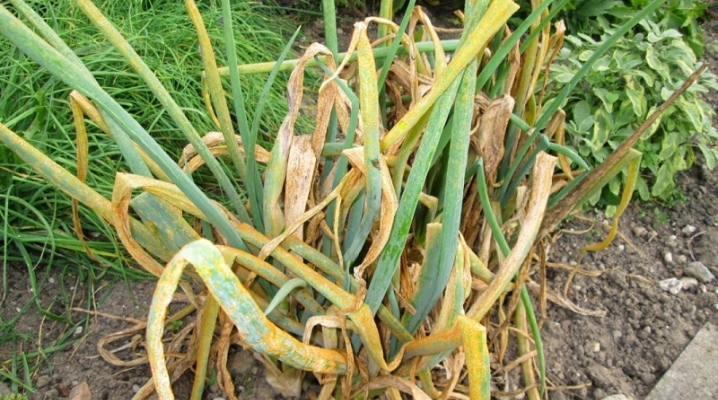
The yellowing problem of onions worries many gardeners. As a rule, a change in the color of onion feathers indicates that the plant is sick or needs additional feeding. You can return a healthy appearance to him and save your harvest using proven folk remedies.
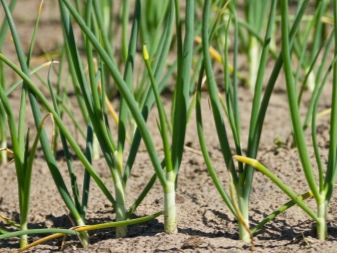

Causes of yellowing
The feather of a healthy onion has a rich green color. Yellowing of the leaves is normal at the end of the growing season. But if this happens before, then something is wrong with the plant. There are several main reasons for onions to turn yellow.
Pests
Most often, plants are harmed by various insects. One of the main pests that can be found in garden beds is the onion fly. The danger to plants is not the insect itself, but its larvae. If not noticed in time, they can destroy the entire crop. The main sign of the appearance of an onion fly in the beds is just the yellowing of the onion. In order to protect plants from this pest, it is necessary to plant them in the garden as early as possible. This will make the young seedlings stronger and more resilient. It will help to save the harvest and choose the right place for planting. It is recommended to plant onions next to carrots. Its pungent aroma will ward off small pests.
In addition to the onion fly, there are other insects that can spoil crops.
- Stem nematode. This is another inconspicuous parasite that can easily destroy onion beds. In order to protect onions from nematodes, they must always be processed before planting. For the prevention of the beds, it is necessary to watered with marigold tincture. Also, these flowers with a strong smell can be planted in the aisles.
- Tobacco thrips. From these small yellowish insects, the correct pre-planting processing of the material and the digging of soil in the fall save.
- Root mites. The larvae of these pests feed on the tissues of the bulbs. As a result, onion feathers turn yellow, and the tubers eventually become loose and covered with fine dust. In order to prevent the appearance of ticks on your site, the garden must be regularly tilled up and the weeds growing there must be destroyed.
- Weevils. The larvae of this insect feed on the feathers of green onions. The first sign of plant damage is yellowing of the leaves. If you do not start the fight against this pest in a timely manner, the entire garden bed may die. To protect against weevils, the beds are sprinkled with ground mustard, pepper or wood ash in the spring. In the fall, all vegetation is harvested and destroyed, and the garden is dug up.
- Onion moth. It is very simple to notice that the plant is affected by this particular insect. The tips of its leaves turn yellow, and noticeable longitudinal lines appear on the feather.
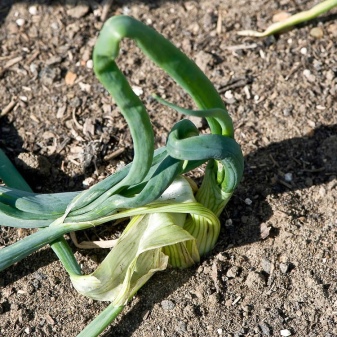
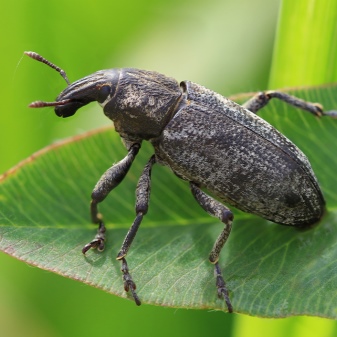
Fungal diseases
Yellowing of onion feathers can also be a sign that the plant is sick. To protect against all diseases, planting material must be well processed. Only healthy bulbs should be selected for planting. If you plant an affected plant, then the plant will be very weak and prone to disease. Also, waterlogging of the soil should not be allowed. It is the stagnation of water that most often leads to the development of the corresponding diseases. Water the plants with warm, settled water.
This is best done in the evening or morning. Water should be poured at the root.
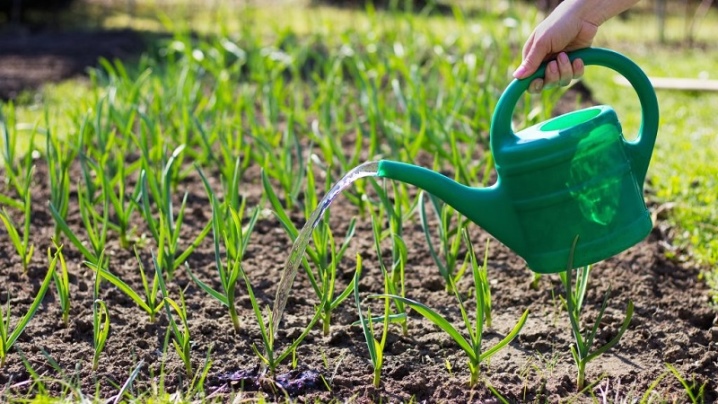
Lack of nitrogen in the soil
Lack of nutrients is always reflected in the appearance of plants.Therefore, noticing that the tips of the leaves turn yellow on the onion, it is worth using a high-quality nitrogen-containing fertilizer for fertilization. You can check the soil for nitrogen content in the laboratory. Experienced gardeners determine this by the appearance of the plants. After all, if there is not enough nitrogen in the soil, not only the onion will suffer, but also its neighbors in the garden.

Drought
Ordinary drought can also cause yellowing of the tips of the leaves. If there is a drought on the street for a long time, and no one waters the onion, the plant will begin to dry out slowly. At the same time, it will not lose the ability to build up fruit mass. This means that this will not particularly affect the quality of the crop. A similar picture can be seen if the plants were planted in the open ground too early.
In this version, the tips of the leaves freeze slightly, and then dry out and turn yellow. This also has no effect on the harvest. If the weather is causing the onion feathers to dry out, it is quite easy to remedy this situation. All that is needed for this is to sprinkle the earth with ash or pour it with an ash solution. Over the next few days, the beds should be carefully watered with warm, settled water. Within a couple of days, the plants will come out of the state of stress.
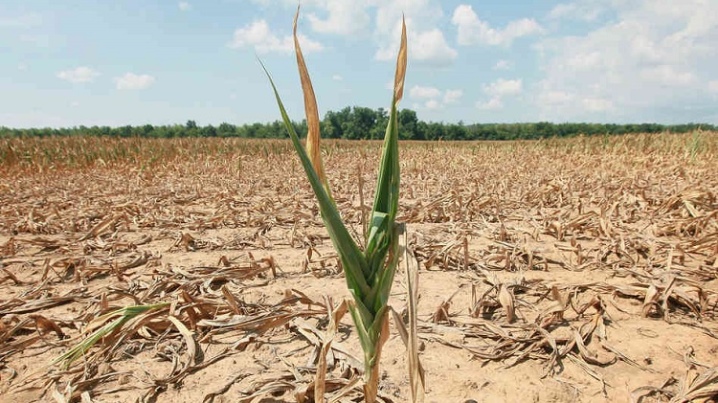
Treatment of onion feathers with ammonia
Many gardeners use ammonia to disinfect and fertilize the soil. This product is also a source of nitrogen, which is often lacking in both young and adult plants. In addition, with its pungent odor, it is able to scare off various pests.
If the tips of the onion feathers turn yellow, dilute 60 ml of ammonia with 10 liters of water. The resulting solution is sprayed on the beds. Do not use this solution too often. An excess of nitrogen will not benefit the plants. Onion feathers will become rough, the taste of the product will change.
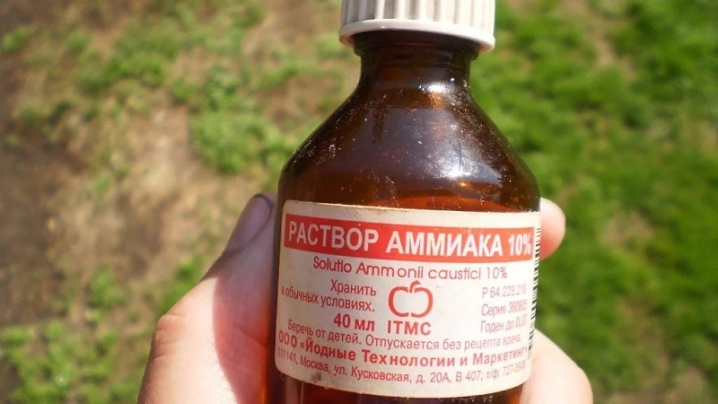
Mullein feeding
When choosing this type of fertilizer, it is worth remembering that you can only use fermented or well-rotted manure. If you add the product fresh to the soil, you can accidentally infect it with a fungal disease.
You can make such a top dressing when the feather grows 10 centimeters. In a bucket of water, you need to dilute 1 kilogram of manure. This solution is infused for a week. After this time, the resulting slurry must be diluted with water in a ratio of 1 to 10. Water the aisle with a solution. After 2-3 weeks, the plants can be re-fed.
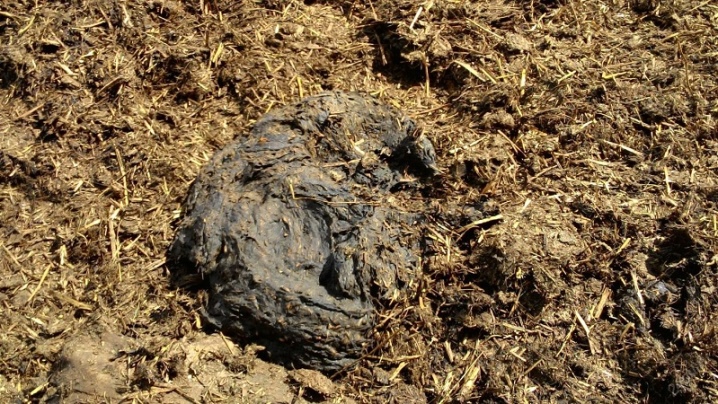
What else can you pour?
In addition to ammonia and mullein, there are other folk remedies that save onions from yellowness.
Yeast solution
Common baker's yeast is rich in iron, trace minerals and nutrients. That is why they are great for fertilizing garden beds. When choosing this method of feeding yellowing onions, you should adhere to the following rules:
- dilute yeast in warm water;
- apply the solution only to abundantly watered land;
- fertilize onions in warm and calm weather.
Traditionally, a simple solution is used to feed plants, consisting of a kilo of yeast diluted in 5 liters of water. Before use, it is combined with water in a ratio of 1 to 10. Another remedy also helps to fight yellowed leaves. It is prepared from 100 grams of dry yeast, half a glass of sugar and three liters of water. All these ingredients are mixed, after which the container is covered with gauze. You need to insist the product during the day. Before use, a glass of the resulting mixture is diluted in 10 liters of water.
Plants are treated with this solution before lunch. You can apply yeast fertilizer no more than 2-3 times during the whole season.
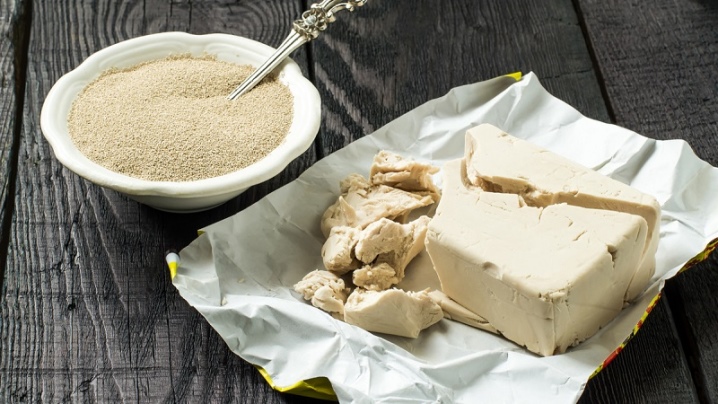
Herbal infusion
If the onion begins to turn yellow due to the fact that it is eaten by a worm or some other pests, it can be treated with a concentrated herbal infusion. For the preparation of the product, fragrant plants are used, whose aroma can scare away insects. You can use lovage, calendula, fragrant tobacco, pine needles or marigolds.Plants must be thoroughly chopped. Pour 200 grams of product with 10 liters of warm water. Insist on such a product for 10-12 hours. Immediately after that, it can be used for spraying.
If the plant lacks nitrogen, a different solution can be used to water it. To prepare it, you will need to collect hay, weeds and green grass and place it in a large barrel. There it is necessary to add food waste of plant origin. Coffee grounds, various peelings, onion peels are suitable. All this should be filled with water. It is best to use settled rainwater. The resulting mixture should be left in a warm place for several days. If it is warm outside, the watering solution will be ready in 5-7 days. If it's cold, you will have to wait one and a half to two weeks. The finished solution is diluted with water in a ratio of 1 to 10.
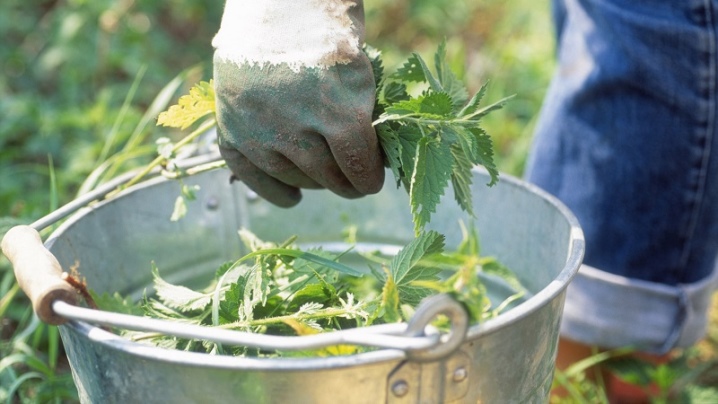
Kerosene
This product also has a strong scent and is excellent at protecting onions from pests. It is necessary to prepare a solution with kerosene immediately before use. Otherwise, it will lose all its beneficial properties.
To prepare the composition, add 3 tablespoons of kerosene to a bucket of water. It is necessary to water the beds at the root, trying to prevent water droplets from falling on the feathers. The next day after processing, the onions will need to be watered with clean water. You can eat processed onions in a couple of days. During this time, the unpleasant smell will completely disappear.
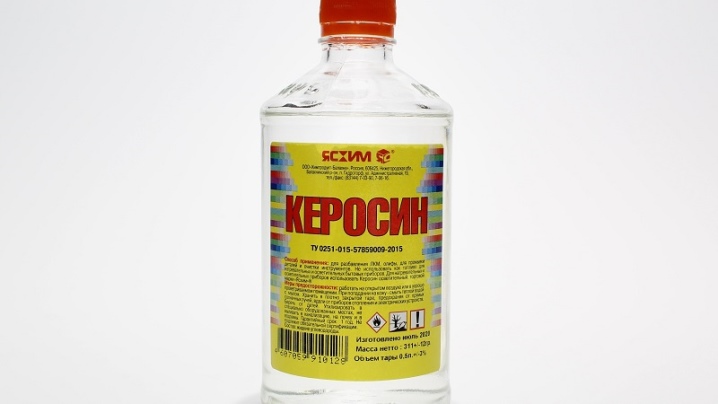
"Metronidazole"
Often for the treatment of plants, gardeners choose a drug such as "Metronidazole". It is great for fighting onion flies. You can buy this antibacterial agent at almost any pharmacy. Before spraying 4 tablets of "Metronidazole" must be dissolved in 10 liters of water. If a little solution remains after the onion has been processed, it can be used to spray the garlic.
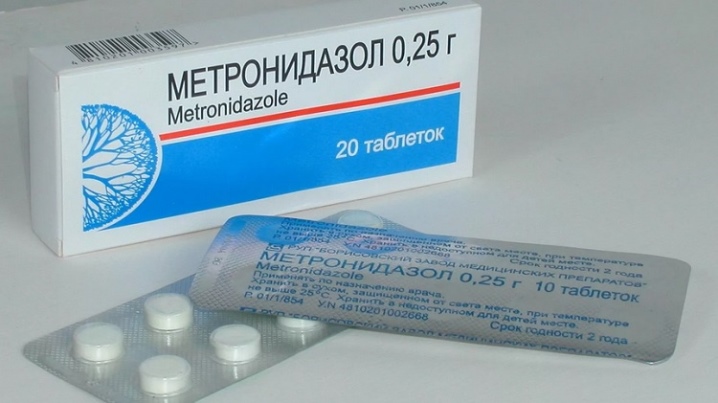
Other recipes
Many gardeners use iodine to process onion beds. It allows not only to save yellowed leaves, but also to increase the yield of onions and improve their color, taste and aroma. For the treatment of the beds, ordinary medical iodine is suitable, which can be bought at any pharmacy. Iodine is used for both foliar and root dressings. To prepare a solution, 1 drop of iodine must be diluted in 3 liters of water. If the plants are weak, add 3-4 drops of iodine to the same amount of water.
Other foods will help to save plants with yellowed leaves.
- Salt. If the onion starts to rot, it should be watered with saline. It allows you to disinfect the soil, and also repels pests. To process onions, you need to prepare a solution of 200 grams of salt and a bucket of water. Water the plants with saline directly under the root. You can use it no more than 3 times during the whole season.
- Wood ash. To prepare a solution, 200 grams of sifted ash is diluted in 10 liters of clean water. The resulting liquid is left in a warm place overnight. In the morning, it is used to water the beds.
- Garlic. A concentrated garlic infusion will help to deal with all pests, except for onion flies. To prepare it, 200 grams of garlic is chopped with a sharp knife or grated. The product is poured with a liter of warm water and infused for 5 days. After the required amount of time has passed, it must be filtered and diluted with 10 liters of water.
- Laundry soap. Soap solution is often used in the fight against various pests. This remedy is great for controlling onion flies. To prepare it, 50 grams of soap shavings must be dissolved in 10 liters of warm water. The resulting tool must be immediately processed by the beds. You can use this product only 2 times during the whole season. It is best used in the evening.
- Hydrogen peroxide. Like ammonia, this remedy can be bought at any pharmacy. It helps to quickly kill pathogens and oxygenate the soil. After processing the plants with a solution of peroxide, they immediately grow and become more green.For watering, a solution is used, consisting of 2 tablespoons of 3 percent peroxide and a liter of warm water. You need to add it to the soil no more than once every 10-12 days.
- Eggshell. This product perfectly saturates the soil with calcium, phosphorus and iron. For its preparation, the shell must be dried and crushed into powder. After that, it must be poured with hot water and infused for a week. In a liter of water, powder from the shell of 5 eggs is usually diluted. When the product is sufficiently infused, it must be diluted with water in a ratio of 1 to 3. Such replenishment will improve the composition of the soil and the condition of the plants.
- Soda. To water the plants, dissolve a tablespoon of soda in a bucket of warm water. Watering onions with such a solution can be used as a preventive measure.
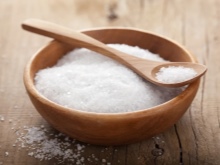
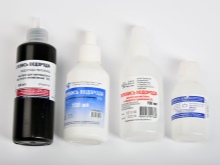
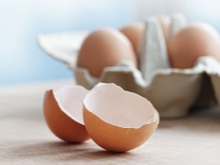
To prevent the onions from turning yellow in the garden, you need to adhere to certain preventive measures.
- Observe crop rotation. Planting onions is best where pumpkin or legumes grew last season.
- Prepare the material before planting. This applies to both onion sets and seeds. Before disembarking, they should always be well warmed up and disinfected. For this, ordinary potassium permanganate or "Fitosporin" is quite suitable. When growing your own seedlings, it is important to store them in the right conditions. Before planting, the bulbs must be carefully inspected. Weak and damaged ones should be thrown away immediately.
- Loosen the soil regularly and water as needed. Very often, onion beds are covered with a layer of mulch to protect them from pests and various diseases.
- Powder the ground with ash. It perfectly repels insects and fertilizes the soil, contributing to greater onion yield.
Despite the fact that onions are not a capricious culture, they still need some care. Plants need to be inspected and fed regularly. In this case, the onion will not turn yellow and die over time.

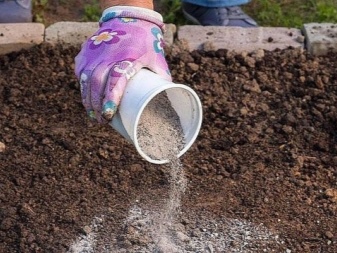
For information on what folk remedies to water the onion, if it turns yellow, see the next video.













Thank you, very intelligible, everything is clear.
Thank you very helpful article.
Thanks for the advice.
Thanks for the advice.
Thanks for the advice, I will definitely use it.
Thanks.
The comment was sent successfully.